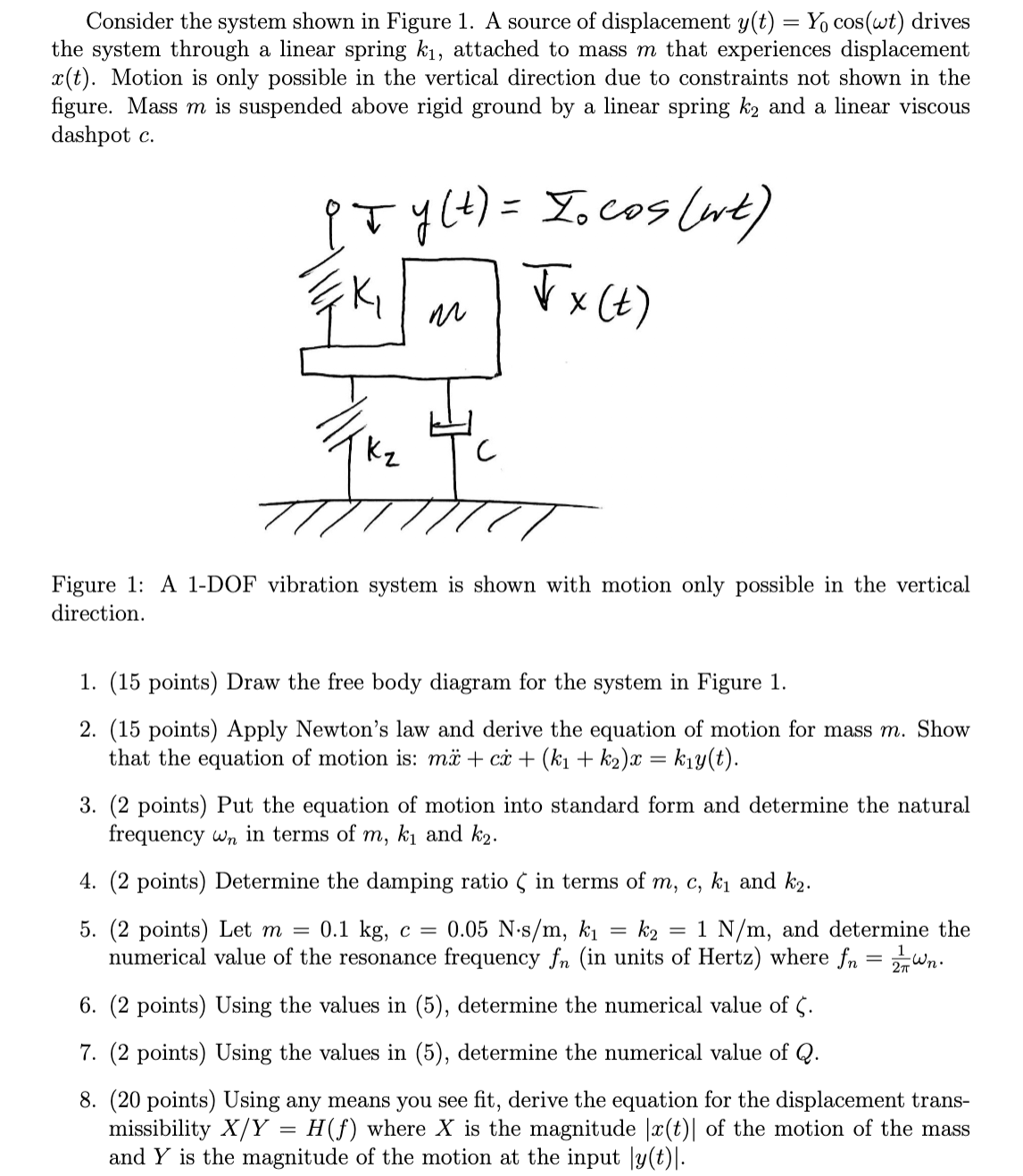Answered step by step
Verified Expert Solution
Question
1 Approved Answer
Consider the system shown in Figure 1. A source of displacement y(t) = Yo cos(wt) drives the system through a linear spring k, attached

Consider the system shown in Figure 1. A source of displacement y(t) = Yo cos(wt) drives the system through a linear spring k, attached to mass m that experiences displacement x(t). Motion is only possible in the vertical direction due to constraints not shown in the figure. Mass m is suspended above rigid ground by a linear spring k and a linear viscous dashpot c. Ty(+) = Iocos (wt) x (+) kz Figure 1: A 1-DOF vibration system is shown with motion only possible in the vertical direction. 1. (15 points) Draw the free body diagram for the system in Figure 1. 2. (15 points) Apply Newton's law and derive the equation of motion for mass m. Show that the equation of motion is: m + cx + (k + k) x = ky(t). 3. (2 points) Put the equation of motion into standard form and determine the natural frequency wn in terms of m, k and k. 4. (2 points) Determine the damping ratio ( in terms of m, c, k and k2. = k2 = 5. (2 points) Let m = 0.1 kg, c = 0.05 Ns/m, k. 1 N/m, and determine the numerical value of the resonance frequency fr (in units of Hertz) where fn = 21 wn. 6. (2 points) Using the values in (5), determine the numerical value of C. 7. (2 points) Using the values in (5), determine the numerical value of Q. 8. (20 points) Using any means you see fit, derive the equation for the displacement trans- missibility X/Y = H(f) where X is the magnitude |x(t) of the motion of the mass and Y is the magnitude of the motion at the input |y(t)|.
Step by Step Solution
There are 3 Steps involved in it
Step: 1

Get Instant Access to Expert-Tailored Solutions
See step-by-step solutions with expert insights and AI powered tools for academic success
Step: 2

Step: 3

Ace Your Homework with AI
Get the answers you need in no time with our AI-driven, step-by-step assistance
Get Started


